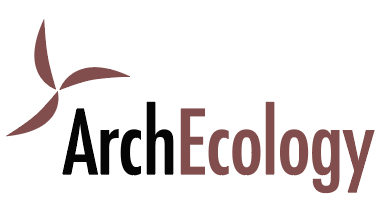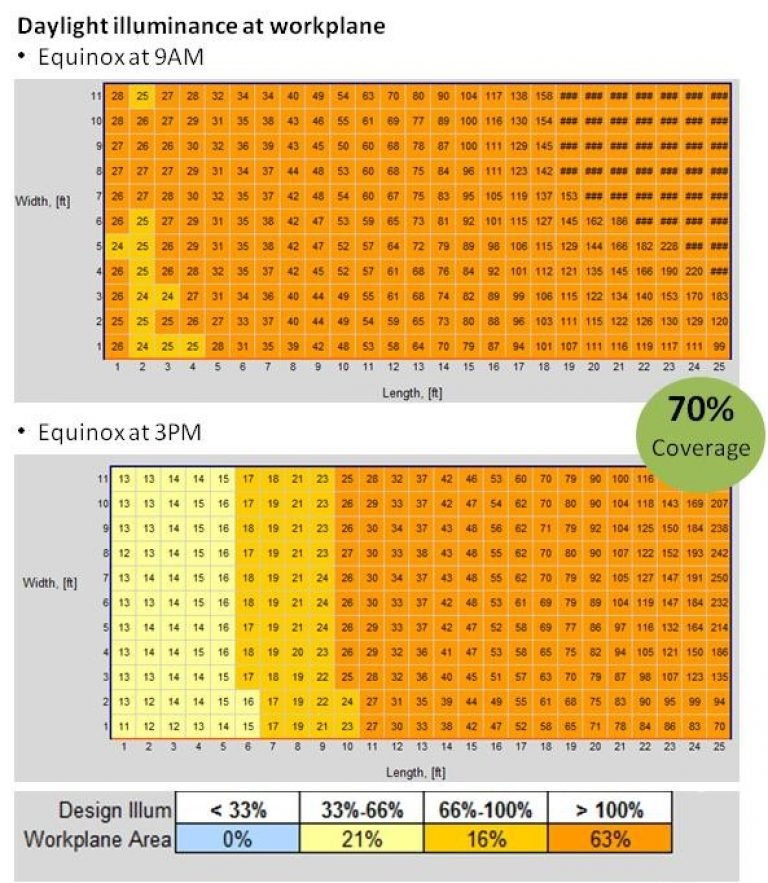Daylight Credit – LEED v4
The “Daylight” credit under the Indoor Environmental Quality (IEQ) category has been updated in LEED v4 to incorporate new metrics. LEED 2009 provided a prescriptive compliance path to achieve daylight credit. This compliance option permitted the calculation of daylight in a space using the window design. These calculations lacked in accuracy as they did not account for project-specific performance factors such as building orientation, exterior conditions, interaction with interior finishes or time of day and year.
LEED v4 no longer permits this prescriptive compliance method. Instead, it focuses on using simulations for daylight analyses and actual measurements to estimate daylight quality and levels.
Compliance options 2 and 3 in LEED v4 are similar to the compliance options in LEED 2009 with minor changes.
Changes to Option 2: Simulations for LEED v4 projects need to use local weather data and the accepted illuminance range is narrowed to 300 – 3000 lux.
Changes to Option 3: Measurements are required to be taken twice a year (within a period of 5-7 months) for LEED v4.
New Daylight Metrics for LEED V4
Compliance option 1 for daylight credit in LEED V4 is new and replaces the prescriptive calculation option. This compliance path incorporates two new metrics –
Spatial Daylight Autonomy (sDA) and
Annual Sunlight Exposure (ASE).
Spatial Daylight Autonomy (sDA):
sDA is a metric that defines a % of area that meets minimum daylight illuminance levels for a specified fraction of the working hours per year. In case of LEED v4, sDA300/50% indicates that a certain percent of area must meet or exceed 300 lux for at least 50% of the working hours per year.
The threshold to achieve points through this compliance path is:
However, spaces designed to achieve these high thresholds for sDA could result in too much direct sunlight in a space. This is measured using the metric ASE (Annual Sunlight Exposure).
Annual Sunlight Exposure (ASE):
ASE is a metric that identifies the potential for visual discomfort in interior work spaces. For LEED v4, no more than 10% of a space should have direct sunlight more than 1000 lux for a maximum period of 250 hours per year (ASE1000/250).
A healthy balance between sDA and ASE can be achieved using design strategies to control glare such as shading devices.
Simulation Software for LEED v4 Daylight Analyses
Simulation software that can help achieve compliance with LEED v4 for the daylight credit include:
Daysim v4.0 – Earlier versions had the capability to measure metric like DA and illuminance, but not sDA and ASE. The recent version, v4.0, has the capabilities to measure sDA and ASE to achieve compliance with LEED v4 but this version is source-coded only. Daysim uses the Radiance analysis engine
SPOT Pro – Performs annual climate based daylight modeling (CBDM) and can generate standard daylighting reports for LEED v4 for compliance option 1 and 2. This software has an excel-based user interface that uses the Radiance engine.
LightStanza – LightStanza is a cloud-based web application. It uses a graphical user interface where it allows users to import 3D models from Sketchup.
IES-VE – IES-VE can perform climate based daylight modeling and can evaluate various daylight metric such as sDA, ASE, illuminance. It uses Radiance simulation engine for daylighting analysis.
DIVA-for-Rhino – DIVA is a daylighting and energy modeling plug-in for Rhino that can perform annual CBDM.




